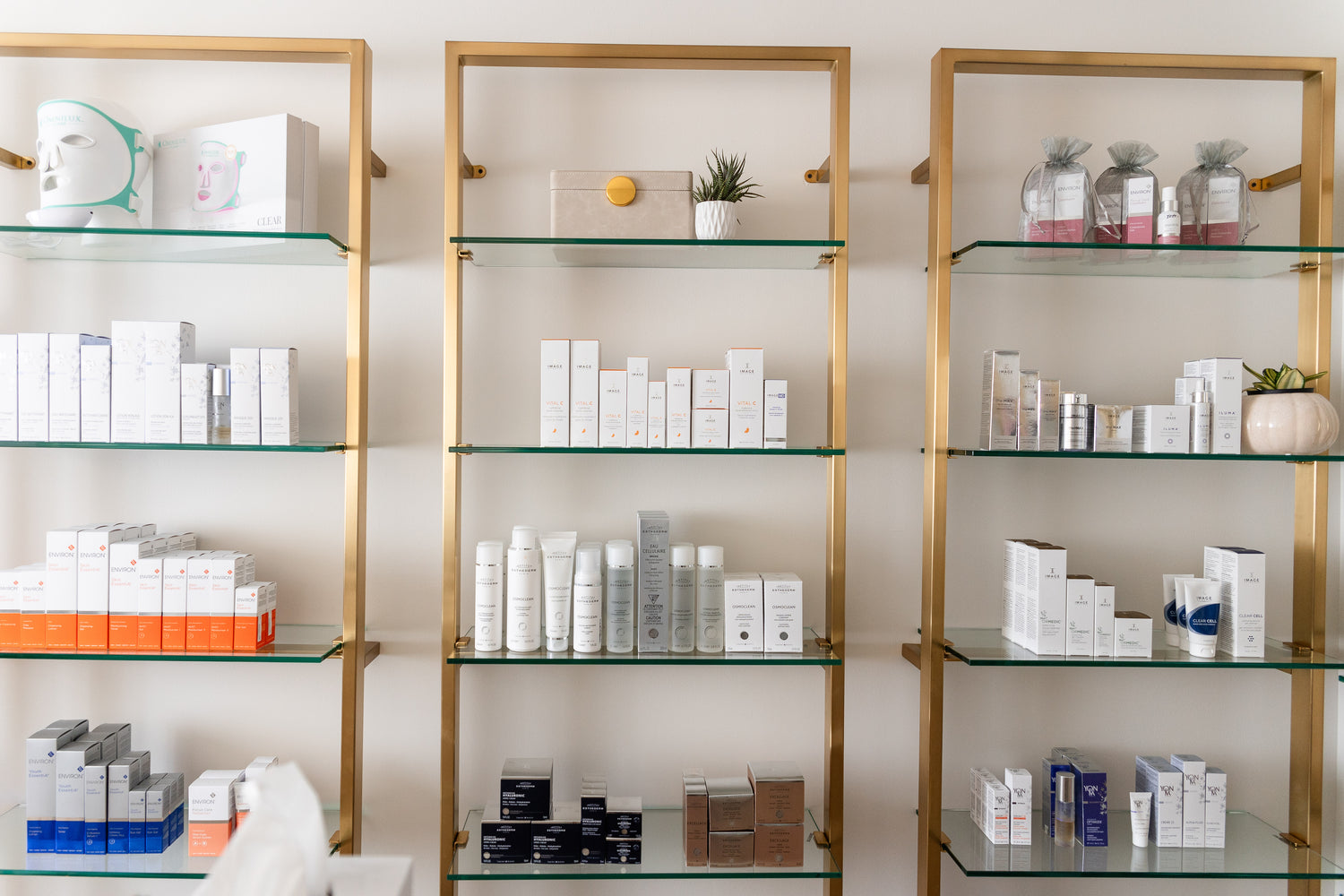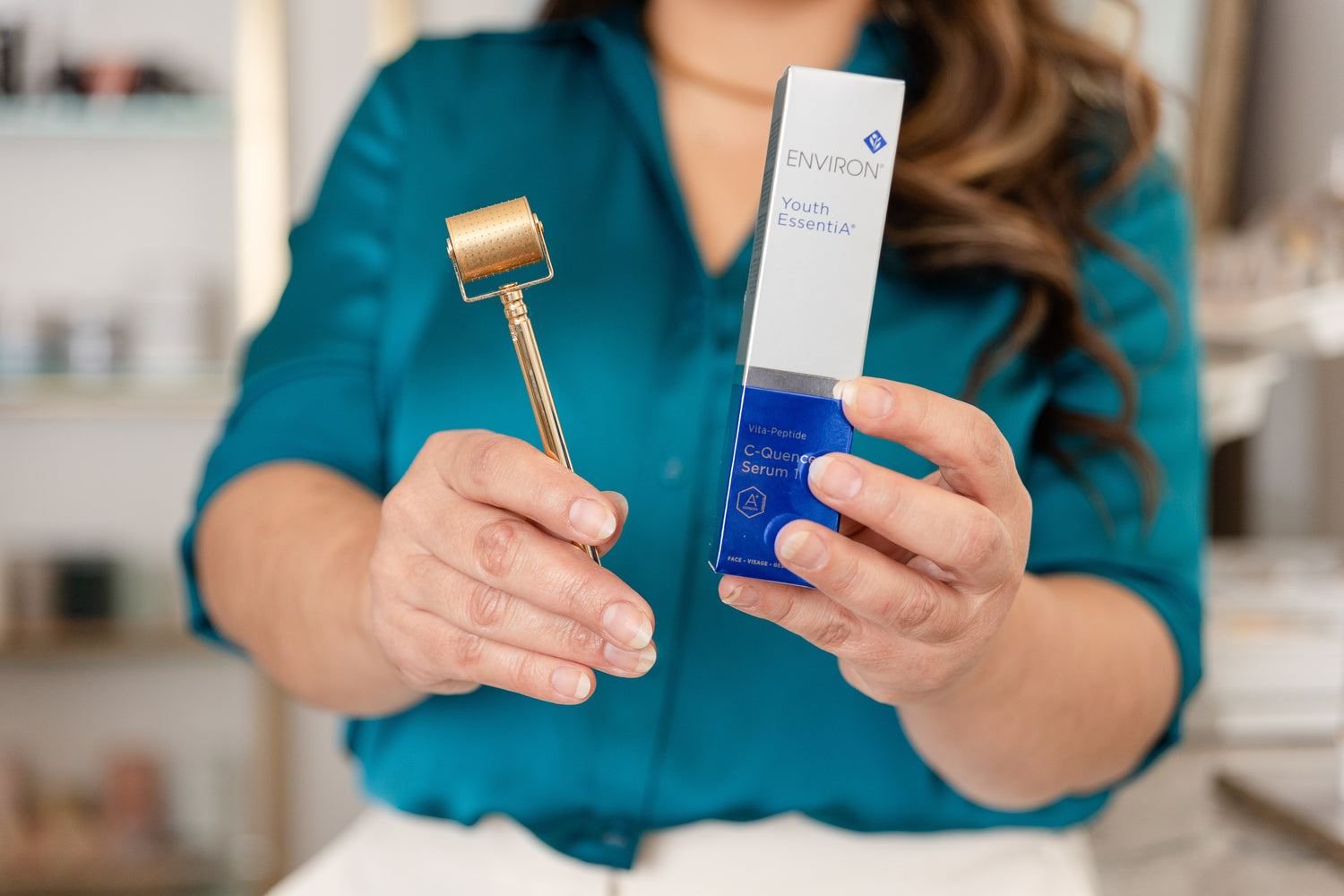I didn’t wear a Halloween costume this year, so I decided to wear my Omnilux CLEAR face mask when I opened the door to tricker treaters. While it didn’t get screams, I did get some curious glances. LED light therapy is a staple in most of my professional facial services. I love the benefits - it calms and soothes the skin (especially after extractions or microneedling) and my clients say it’s very relaxing. Let’s dive in and find out why I love using this modality in my facial treatments.
What is LED Light Therapy?
Light-Emitting Diode (LED) light therapy is the application of light energy to the body to obtain therapeutic benefits. This technology, also known as low light therapy, was originally researched and developed by NASA. The application of varying wavelengths of light creates a myriad of natural biochemical reactions to treat skin concerns such as acne, wrinkles, wound healing and pain.
How Does Light Therapy Work?
When applied to skin, LED light therapy acts as a battery boost to compromised skin cells. The light source emits photons, which are absorbed by mitochondria through the cell membrane. This, in turn, stimulates ATP (the fuel that drives all cellular activity) synthesis. Increased ATP kicks off a cascade of metabolic events (exactly what we want our skin cells to do!).
Which Light Works Best?
Different lights penetrate the skin at different depths. Deeper doesn’t mean better, it just mean different (benefits/results). In skincare treatments, the most common lights are blue, red and near-infrared. Blue light has the shortest wavelength, penetrating the epidermis. Red light has a longer wavelength and near-infrared light has the longest (of the three lights) wavelength.
The blue light wavelength creates oxygen which destroys p.acnes (the bacteria that causes acne) and is typically used in acne treatments. The red light wavelength targets fibroblast cells which are responsible for producing collagen and elastin fibers and is widely used in anti-aging treatments. Near-infrared light creates angiogenesis (the process of creating of new blood vessels) which decreases inflammation, reduces pain and promotes wound healing.
While there are many devices on the market that tout a variety of other lights (amber, green, violet, etc), only red, blue and near-infrared have FDA clearance for use in skincare and clinically proven results. This doesn't mean that amber, green, violet, etc lights don't have benefits; they just haven't been clinically studied.
What to Expect With LED Light Therapy?
LED light therapy treatments are non-invasive, safe and have no downtime. As with any other skincare modality, consistent treatments are necessary to achieve desired results. Some devices are handheld and some are hands-free. Session times can range from 10 to 20 minutes.
In the treatment room, an esthetician will cover your eyes before placing the LED light panel over your face. The specific treatment (blue, red, near-infrared or a combination) will be selected based on your desired results.
The full panel LED lights are usually saved for professional use and can be costly to procure. At-home devices are usually handheld devices that you can use as a part of your at-home skincare regimen.
LED light therapy should be performed on clean skin - no skincare product or makeup should be on the surface of the skin as you don’t want any interference with the light and contact with the skin. Some sheet masks allow the light to penetrate, but be sure to confirm that the sheet mask you use does so.
What to Consider When Purchasing an At-Home LED Device?
Most importantly, determine how many lights the device has. In this case, more is better. The more lights a device has, the more surface area it can cover and the better the results.
Consider what kind of lights the device has and whether that addresses your skin concerns. Some devices use a combination of lights (red and blue) in order to achieve overall better results. Some devices have one type of light, which means it was created to address a specific skin concern (acne or anti-aging).
Handheld or hands-free? I prefer a hands-free device because I’m a notorious multi-tasker and will likely work on other things while my light device is on. Handheld devices typically cover a smaller surface area and require you to move the device around your face in order to treat the entire face. Hands-free devices usually cover a larger surface area and don’t require you to move the device around in order to target the entire treatment area. LED devices aren’t just limited to treating the face - there are plenty of devices on the market that treat the neck & décolleté, hands, etc. We especially love the ones that treat the hands!
I also prefer a flexible, soft mask as opposed to a hard, contoured mask. Not everyone’s facial contours can fit a structured mask perfectly. A flexible mask will sit comfortably on your face regardless of its unique contours.
LED light therapy is a fantastic way to continue the benefits of in-spa professional treatments at home. By itself, it will not “cure” all your skincare concerns. Instead, when used in conjunction with your overall skincare regimen, will boost those benefits.






